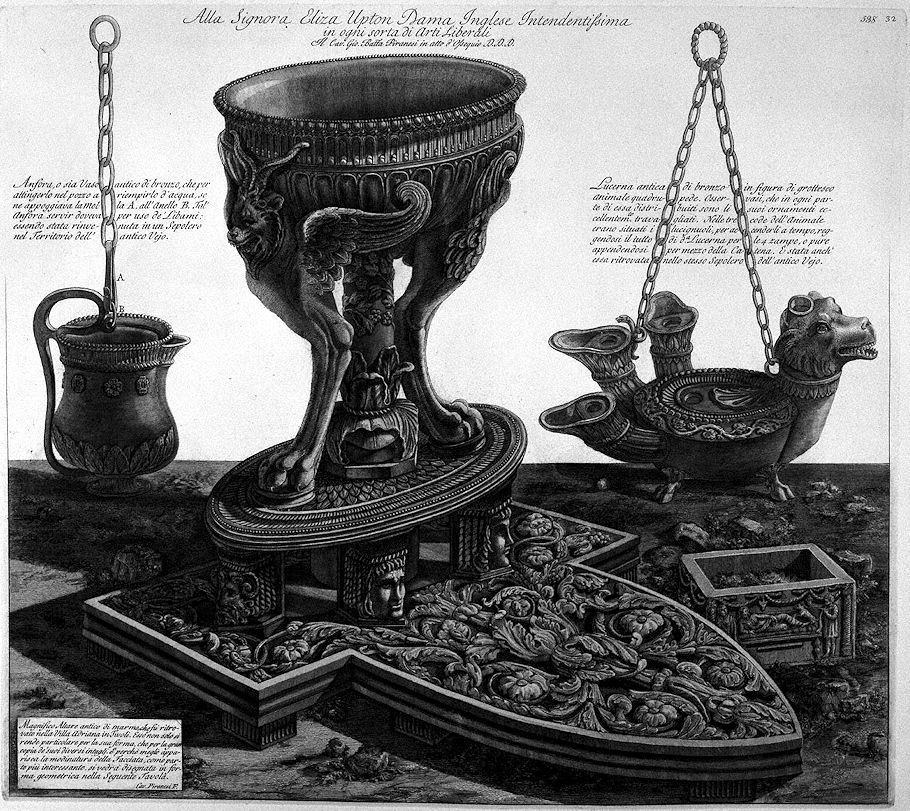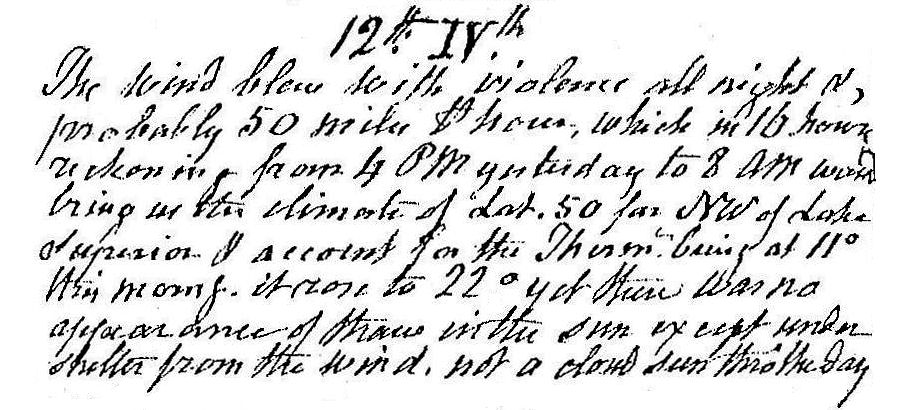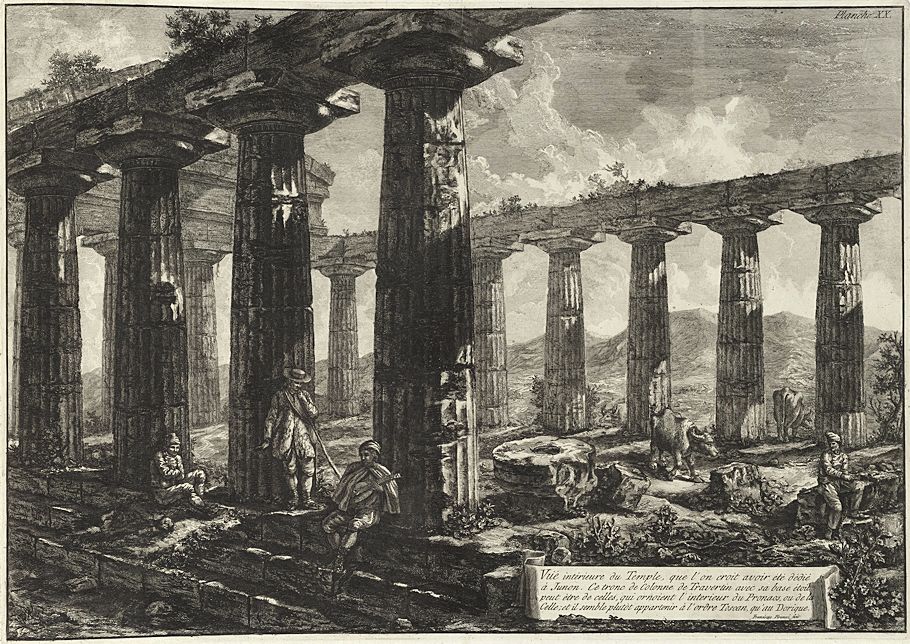12 February 1778 Thursday
Vases, Candelabra, Grave Stones, Sarcophagi. Tripods, Lamps and Ancient Ornaments volume I

To Mrs. Eliza Upton English Lady Most Intense in All Sorts of the Liberal Arts
The Cav. Gio. Batt(ist)a Piranesi in Act of Ossequio D. D. D.
Amphora, or ancient bronze vase, which in order to draw it from the well to fill it with water, the spring A. was placed against the ring B. This amphora must have been used for the use of Libami: having been found in a sepulcher in the Territory of the ancient Veii.
Ancient bronze oil lamp in the figure of a grotesque quadrupedal animal. It should be observed that in every part of it distributed are its excellently worked ornaments. The wicks were located in the three tails of the Animal, to light them in time, holding everything of the lamp by the 4 legs, and also hanging by means of the Chain. It was also found in the same Sepulcher of ancient Veii.
Magnificent ancient marble altar, which was found in the Villa Adriana in Tivoli. It is not only made particular by its shape, but by the large number of its different carvings. And so that the molding of the Façade appears better, as the most interesting part, it will be seen drawn in geometric form in the following Table.
Cav. Piranesi F.
12 February 1812 Wednesday

The wind blew with violence all night and probably 50 miles per hour. which in 16 hours reckoning from 4 PM yesterday to 8 AM would bring us the climate of latitude 50 far NW of Lake Superior and account for the thermometer being at 11° this morning. It rose to 22° yet there us no appearance of thaw in the sun except under shelter from the wind. Not a cloud in the sky through the day.
12 February 2006
Do buildings have gender?

key to the Ichnographia Campus Martius
12 February 2010
Re: “New” Helens
With Christianity then the newly official and only state religion of the Roman Empire, no doubt it eventually crossed Galla Placidia's mind as to what the role of a newly, officially Christian Empress of the Roman Empire might be. Helena, if not also Eutropia, where then the obvious Imperial role models.
Re: Streets of Aelia Capitolina/Jerusalem
Within Eusebius's LIFE OF CONSTANTINE, the Church of the Nativity and the Church at the site of the Ascension are attributed to Helena's direct involvement. Within the same text, the Church of the Holy Sepulcher is not attributed to Helena, however Eusebius does name the architect. There is no mention of the Holy Cross or of a discovery of the Holy Cross within the LIFE OF CONSTANTINE.
The LIFE OF CONSTANTINE was published a year after Constantine's death. Eusebius had met Constantine at least twice, and perhaps even met Helena if she was at the Nicene Council (if not also when/if she was in Palestine). Beside being a historian, Eusebius was metropolitan bishop of Palestine. It does not seem likely that Eusebius could have gotten away with making up a story about Helena's involvement in the building of certain 'holy land' churches.
I'm not certain, but I believe there is no hard evidence that Constantine was ever at Jerusalem while he was emperor.
12 February 2015

Virtual Painting 100

Virtual Painting 102

Virtual Painting 106
12 February 2023 Sunday
Différentes vues de quelques Restes de trois grands Edifices qui subsistent encore dans le milieu de l'ancienne Ville de Pesto autrement Posidinia qui est située dans la Lucanie

Interior view of the Temple, believed to have been dedicated to Juno. This trunk of Travertine Column with its base was perhaps one of those, which adorn the interior of the Pronaos, or the Celle; and it seems rather to belong to the Tuscan order, than to the Doric.
Francesco Piranesi did 1778
|